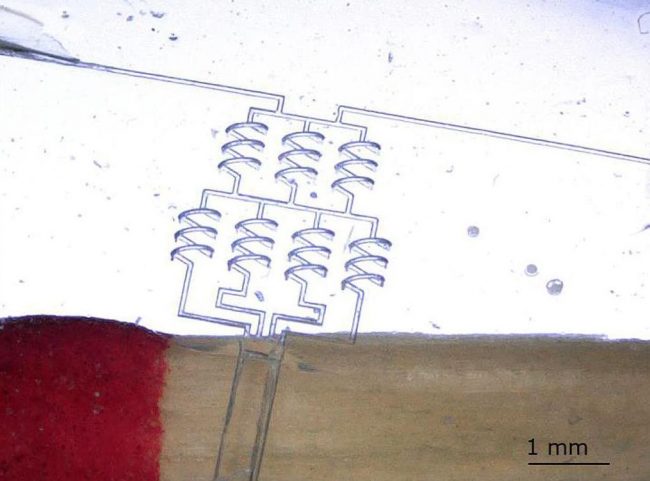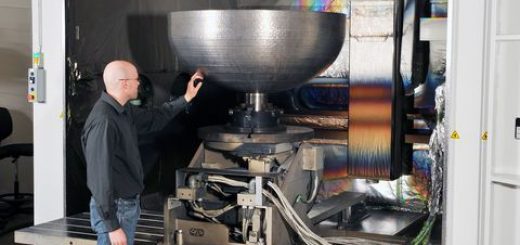Microfluidic Channels in Glass by 3D Microfabrication
The manufacturing of hollow 3D glass structures for microfluidic applications is an extremely challenging task. Within a research project, now a new microfabrication concept has been developed to produce microfluidic structures made of fused silica glass, based on Nanoscribe’s microfabrication technology. In Nature Communications, a highly reputable scientific journal, the researchers presented a new concept to fabricate 3D hollow glass structures with high precision and intricate 3D designs.
 A 3D microfluidic mixer structure in fused silica glass based on sacrificial template replication
A 3D microfluidic mixer structure in fused silica glass based on sacrificial template replication
Quartz glass has excellent optical, chemical and mechanical properties, which remain stable in the long-term. Glass would therefore be an ideal material for complex hollow microstructures to produce miniaturized process engineering components such as lab-on-a-chip devices. But glass is also an extremely difficult material for microstructuring.
In a collaboration between the University of Freiburg, the ETH Zürich, the University of Würzburg, and Nanoscribe GmbH, the researchers developed a method based on sacrificial template replication to produce 3D microfluidic channels in transparent glass. They fabricated essential 3D microstructures using Nanoscribe’s 3D printer. The picture shows an additively manufactured out-of-plane 3D mixer as the sacrificial template within the process chain for the fabrication of fused silica hollow structures.
 3D printed polymeric out-of-plane microstructure
3D printed polymeric out-of-plane microstructure
Open-access publication in Nature Communications: Fabrication of arbitrary three-dimensional suspended hollow microstructures in transparent fused silica glass
Once the polymer microstructure is printed, a liquid nanocomposite glass material is simply cast on top of the polymer template and solidified using UV light. Along the sacrificial template replication process, a thermal treatment ultimately turns the nanocomposite material into fused silica glass, molded to the shape of the 3D sacrificial microstructure. Within the thermal process, comprising a maximum temperature of 1,300 degrees Celsius, the sacrificial polymer structure is entirely removed, resulting in hollow micro-channels within the glass. The smallest fabricated channel realized in the research project features a diameter of approximately 7 micrometers. The precise out-of-plane channel guidance of the mixer clearly underlines the feasibility of complex glass designs.
The new manufacturing process for hollow microstructures in glass still needs to be further developed and brought to industrial market maturity. In addition to various polymers, ceramics and metals, glass could soon become another attractive material for Nanoscribe’s microfabrication technology, in particular for highly-precise 3D microfluidic systems.
Source: nano scribe




Recent Comments